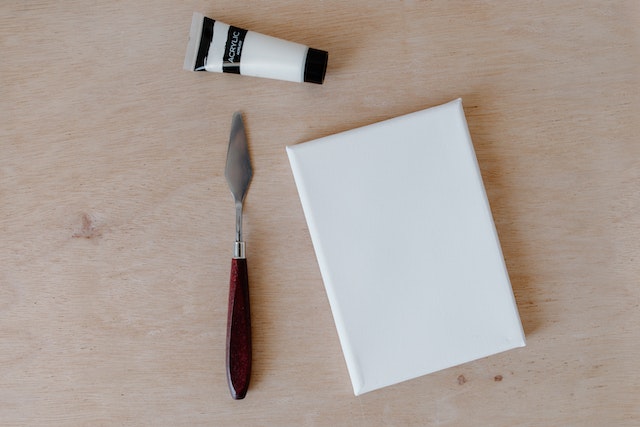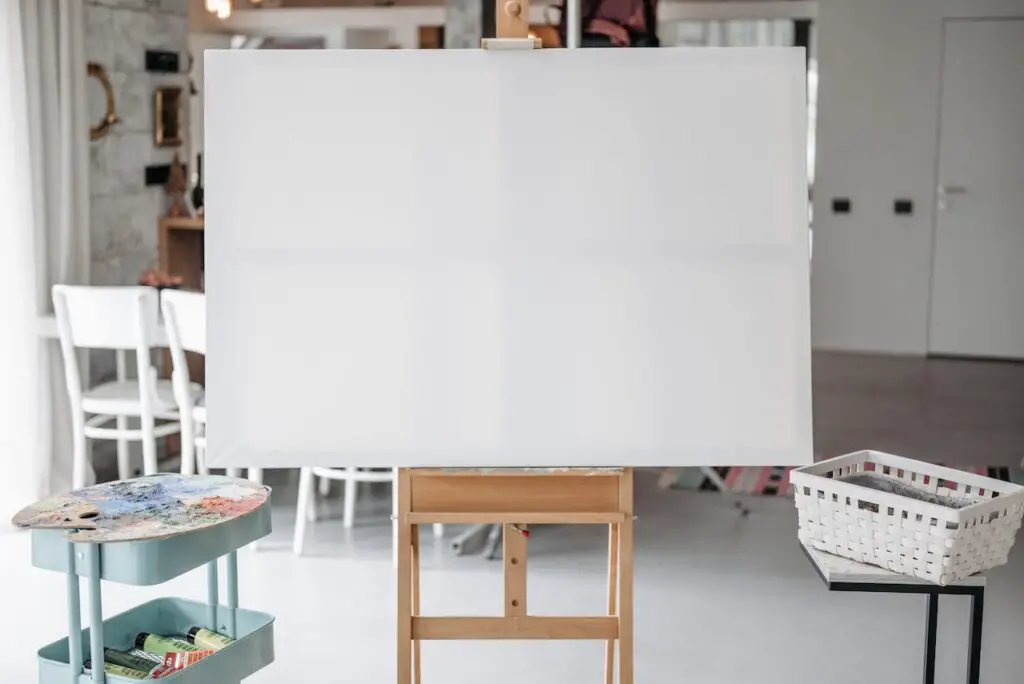Canvas is an important material when it comes to painting. It is where artists put their hearts and soul to give birth to a masterpiece that could stand the real test of time. We should mainly make sure that our primary material, canvas, is primed correctly so that the following applications on it would be worth the hard work and talent. But, should we gesso a previously primed or gesso-applied canvas?
In general, pre-primed canvas with gesso needs reapplication, oftentimes for cheaper canvases. These canvases may not have enough layers of gesso, making paint dry faster and smoother application harder. Grease and dust on canvas also prevent proper adhesion of paint on canvas.
If you have just started to venture into painting or have decided to start it as a hobby, then this article will surely save your day. All the things you need to know about canvases to start your art journey are here. You just need to keep reading.
Should you gesso a previously primed canvas?
Although store-bought canvases already have gesso on them, their surface might not be ready for the paint application yet. Meaning, the surface of the canvas may have grease, dust, and bumps and if we do not apply gesso on it, the next paint applications will not adhere to the canvas well and tend to separate or flake.
When we go to art shops, we can see canvases that come in various types: oil canvas that is intended solely for oil paint, absorbent canvases that are intended for tempera, and universal canvases that are suitable for both oil and acrylic paint. On the other hand, some are already primed. Those that we call ‘raw’, meaning, we still need to prime it or, in other words, apply gesso. For those that are already primed, there are many advantages if we still reapply gesso on it for it will greatly affect our output.
Store-brought pre-primed canvases can have little lumps, and bumps as well as little bits of cotton showing through the gesso. Inevitably there can be spots of grease and dust on the canvas surface, especially if the plastic wrap of the canvas is torn in some places, which is very possible.
You might wonder how grease comes onto the canvas surface. Often when you touch the canvas surface with bare hands, grease transfers from hands to canvas. Therefore you should never touch a canvas bare hand. However, you can use the back of the fingers as not much grease is present there.
These foreign things other than gesso on a pre-primed canvas make paint adherence harder. It comes in the way of making a long-lasting bond of paint and the gessoed canvas surface.
If we happen to use acrylic paint on an oil-primed canvas, the oily surface will eventually cause the paint to peel and flake. However, most canvases are primed with an acrylic primer, which can be used as a ground for both acrylic and oil paints. The thing that we need to make sure of here is that the gesso on the canvas is dry and even.

Why do we use gesso?
Whenever we prepare or prime the surface of our canvas, gesso is what we need. Gesso, pronounced as ‘jesso’ is the same as a primer, as in ‘pre-primed canvas’. It is made from a combination of paint pigment, chalk, and binder.
It can be used to protect and enhance surfaces such as canvas, paper, wood, and board – making them less absorbent and smoother. If we plan to use oil or acrylic paints on any absorbent surface, we should apply gesso before doing so.
Disadvantages of painting directly on store-bought canvas
Store-brought pre-primed canvases may not have smooth paint application. the canvas may be absorbing more paint still. You will have to drag a lot to apply paint. This will come at the price of your brushes as it can easily wear out the brushes. This is the case with most cheaper canvases.
Also, the paint may seem to separate from the canvas, showing poor adherence to the surface. Paint separation often happens due to grease on the canvas.
It is best to use the back of your finger to check if the gesso is dry after applying the gesso. This will avoid transferring grease or sweat produced from glands at the front part of your fingers. Alternatively, you can use a Mahl stick when painting to rest the hand. You can even use gloves.
However, if we re-gesso an already primed canvas, it is better not to force dry the gesso and let it air dry instead. And, we must always remember how important it is to properly prepare the canvas that we will use. It will make the paint application process much better, and smooth.
Benefits of re-applying gesso on the canvas
Since re-applying gesso made a smooth surface that does not absorb much paint, the paint application is very smooth. You will not have to use much paint. As most of us would purchase budget packs of canvases, re-applying gesso is a great way to have a nicer surface to paint on.
The canvas would not absorb as much moisture if you are painting on the re-gessoed canvas, and not directly on the store-bought canvas. Your paint would not dry faster than usual which will happen if you paint directly on the canvas without applying gesso it. Since you have a smoother application on your gesso-applied canvas, blending becomes easier.
I have written a whole article about ‘13 Best ways to get a smooth finish with acrylic paint‘. You will get to know the best tools to use and techniques to follow for a smoother painting outcome there.
Especially if you are an oil painter you need good solid layers of acrylic gesso to paint on. You can also use oil primer but that is a separate scenario. For oil painting, you need to apply about 3 to 4 coats of gesso to protect oils from seeping through the canvas.
You need to let the gesso dry for at least 3 days for proper mechanical adhesion of oil paints. It helped to eliminate excess water which is not favored by oil paints or oil painting solvents.
Cheap alternatives for gesso
Some artists even use acrylic house paints instead of gesso to cover the canvas surface or when reusing an old canvas. This is a cheaper alternative and can be used for practice pieces so longevity is not a concern. Because the house paint would eventually crack and wouldn’t stand the test of time. If you want to use house paint instead of gesso go for good quality house paint.

When re-applying gesso not necessary?
In case the canvas that we bought is already primed and is of good quality then there is no need to prime it again unless we are trying to change the tooth of the canvas. We prime a raw canvas so that the paint does not soak through the fabric because the primer seals it off in a way. In other words, there is no need to prime an already primed canvas depending on its quality. We must not also forget that a pre-primed canvas already has a layer of gesso on it.
If we are working on a commissioned painting we should select materials that will stand the test of time. This means you will be using the best canvases that often time do not need re-applying gesso. But for everything else, we will be using thors 5$ canvases.
But, if we apply paint and it did not create a good texture on the canvas, chances are we still need to reapply gesso on our canvas to make sure that the paint applications will not seem to get separated and flake eventually.
How to apply gesso on the canvas?
Gesso needs to be evenly applied on the surface of the canvas. This ensures that once we let the gesso dry, the entire surface of our canvas will also dry evenly. Let’s see how we can apply gesso as well as the materials that we need.
Materials we need
We also need to prepare a few materials aside from different types of brushes and of course the gesso. To apply gesso on a canvas, we will be in need the following:
- Sandpaper (medium grade);
- Blending brush/ a fluffy brush;
- Paintbrush, flat (you can use a common household brush or an acrylic brush of 1-inch size);
- Small pin hammer;
- Surface flattener/ scraper(to get the surface of the canvas nice and smooth);
- Hair dryer (optional); and
- Gesso primer
Step-by-step guide on applying gesso on canvas
After we have prepared all the materials, what we need to prepare next is our canvas. Normally, if we have a store-bought canvas, it is already pre-primed but in order for us to make sure that the surface is neat and even and that our next paint applications will not flake and separate, we need to reapply gesso on it. You can also take a raw canvas that you stretched yourself to gesso the same way.
Step 1: Make sure the canvas is well taut
First, we need to make sure that the canvas’ surface is even and properly stretched because this will affect our gesso application on it. So, to address this concern, we have to use the tiny pieces of wood that come with the canvas we buy. these are called ‘keys’. We simply need to flip back our canvas and insert these wooded keys on the 4 edges of the canvas; 2 ‘wooded keys’ on each edge.
After this, we will be in need of a tiny hammer to tap on the ‘wooded keys’ and secure them in place. It will make sure the ‘wooden keys’ serve their purpose, evenly and nicely stretching our canvas. Tap on the canvas surface and listen for the drum sound. If it gives a nice drum sound, the canvas is nicely taut.
Step 2: Sand lightly to smooth the surface
Once our canvas creates a nice and tight surface, we can sand very lightly it to remove bumpy spots on previously primed canvas. Remember to sand it in either vertically or horizontally, up and down, or left and right, respectively. Once done, give it a nice dust-off with a fluffy brush to remove the dust and tiny particles from sanding.
Step 3: Apply gesso evenly throughout the canvas
Now, our canvas is ready for the gesso. Apply gesso evenly on the surface of the canvas and make sure that the canvas gets a nice full coverage of it. It doesn’t matter which direction you apply gesso as long as you cover the surface. Look from the side of the canvas to see what parts of the canvas you have missed and cover those areas.
After covering the whole surface you can brush again lightly to make sure there is an even coat of gesso throughout the canvas. Take your brush up and down and left and right, very lightly throughout the surface, without missing any spot.
Also, we can use a scraper to flatten the gesso layer and evenly distribute it. This will assure that the surface is even, and smooth and that the gesso is applied nicely. Also, don’t forget about the edges of the canvas. You’ll need to repeat this process at least two to three times.
Step 4: Let the gesso dry well
That’s it! Now that we have applied our gesso, we can either let it dry or if we are in a rush, we can always ask the aid of a hair dryer to dry the gesso on our canvas However letting the gesso airdry gives the best results.
Even though gesso air dries quickly, we must still allow the first coat of it to dry for at least an hour to be sure that it will not lift when the next layers are applied. The key here is the time we spend letting the gesso dry before the next application. Remember, it is vital that we apply enough coat/s of gesso so that the surface of the canvas will even out.

After applying the last layer of gesso, let it dry overnight. You can also mix in a color with the last layer of gesso to give a tint to the canvas background. This will give you a nice ground color that could show throughout the painting in small patches.
If you are interested to know more about gesso and the time it would take to dry, you can read my article: How long does gesso take to dry? (With influencing factors).
Again, to assure that the canvas has a smooth surface, you can sand gesso between coats. It will come in handy for photo-realistic paintings just sand each layer with fine sandpaper. Make sure to do this in an open and well-ventilated area as it will create dust particles.
Some artists use to wet the back of the canvas before painting. This can bring greater benefits to your art. You can read more details about this in my article; Wetting The Canvas Before Painting: All You Need to Know
How many coats of gesso are needed?
Frankly speaking, the number of gesso coats is optional if we use acrylic paints; however, if we wish to use oil-based paints, we must at least give our canvas 3 or 4 coats to eliminate the chance of oil strike-through to the canvas.
The number of gesso coats needed always depends on the type of surface you are looking for. Portrait paintings oftentimes will need a nice smooth surface. in that case, you can apply as many gesso coats as possible until you get that smoother surface you desire. Landscapes however will not need that many coats of gesso, only 2 or 3 coats at least for myself and how I am painting.
Can you apply gesso over an old acrylic painting?
If we happen to plan to redo an old acrylic painting and reapply gesso on it, we must have initially considered how thick we want the gesso and what medium we have used. Based on experience and some research, we can actually gesso over acrylic as many times as we want to depending on how thick we want it to be.
If we use oil paints, we must allow a long time for it to dry and it actually takes forever so instead of reapplying gesso, we should just simply remove the paint and then gesso over it.
Conclusion
As artists, one of our number one priorities is the quality of the materials we use and canvas is one of those. We want to make sure that our painting will not be ruined just because we failed to gesso a canvas. Painting needs artistic hands, and the materials needed to come up with one also require keen eyes and sufficient attention. Also, the manner of preparation greatly affects our output so we must not take it for granted.
Take note that an artist comes to life only if we pour ourselves into it.
Is this article helpful to you? Show us some love by leaving a comment below.
Thank you!


